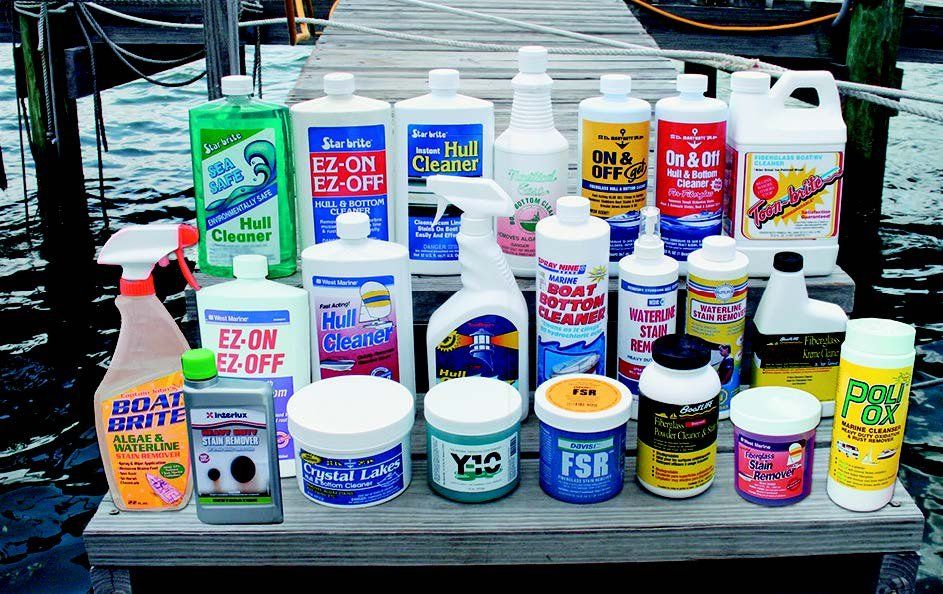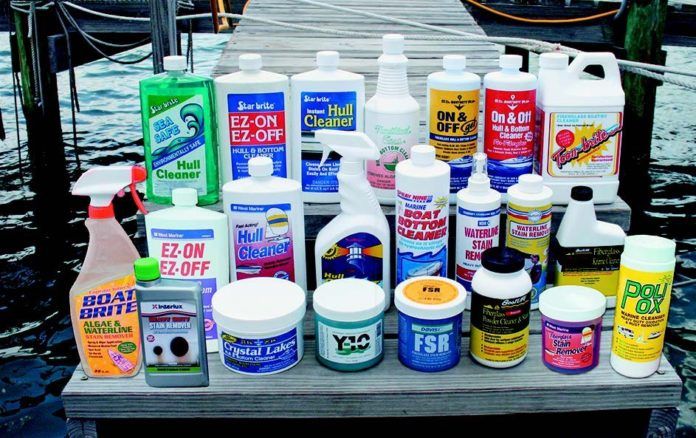I honestly hope you can help. Several weeks ago local seagulls had a sushi feast on my boat. The leftovers were large and small and mostly on non-skid. When I got to the boat I cleaned up whatever I could pick up, but the sun-baked stains remained. Ive tried whatever I possibly could including Barkeepers Friend and Total Boat White Knight. They both have oxalic acid as main ingredient. It stayed there for 30-40 minutes, I didnt touch it. Next I got oxalic acid as powder and made my own very strong mix. Again, no major effect. Next, In desperation, I broke out 3000 PSI power washer, which again didnt remove the stains. My marine biologist friend said to try Draino.
Val Vechnyak
via email

Weve not tried Draino, but can recommend a method that has worked very well for us. With any stain, you want to start with the least aggressive cleaner. An ordinary boat soap or phosphate free laundry detergent (diluted as directed) will get most stains if your hull is recently waxed. If that wont work, your next weapon is diluted chlorine bleach.
If bleach fails, move on to acids. We suggest a cleaner containing hydrochloric acid (HCl). You can make your own solution using diluted muriatic acid (30-35 percent HCl) from a pool supply house or hardware store. This will be the least expensive route (see One Bucket Cleaning Kit, PS May 2017.) Dilute with water to get a 3 percent solution of HCl. Pour acid into water-never the opposite-and protect your eyes. You can try a slightly higher concentration, but be careful! The pH is very low and this concoction will quickly corrode aluminum and most other metals.
Your other option is to use an over-the-counter cleaner (marine or otherwise) that is pre-diluted with hydrochloric acid. You have plenty to choose from. One of our top rust-stain cleaners (see Rust Erasers, PS May 2006 online) or waterline stain cleaners would be a good choice (see PS Tests 22 Hull Cleaners, PS November 2007 online). Spray-type cleaners finished top in both tests, but for a vertical surface, the gels can be more effective. Whatever acid you use, don’t let it dry, and rinse well with fresh water.
If acids can’t remove the stain, we move on to a rubbing/buffing compound, which removes oxidized layers of gel coat that hold the stain. If you have a light-duty rubbing compound or a cleaner-wax, try that. Youll likely need a heavy duty compound, and weve tested several (See Heavy Duty Rubbing Compounds, PS April 2014.) Unless the entire deck could use a buffing-and it sounds like it might-you can apply these to the stain by hand.
This should take care of the stain, but your work is not done, yet. In order to save you trouble the next time, youll want a layer of wax to protect the surface. The simplest, safest protection for decks is a wash-n-wax. You can opt for a special non-skid wax (see Non-skid Waxes, PS October 2006 online), but the wash-n-wax cleaners produce a surface gloss that makes it easy to hose off bird poop, yet is not too slippery. Theres a barge-load of boat soaps that will work (see Boat Soaps for Regular Washdowns, PS January 2013 online). As an added measure, you could apply a spray wax (see Searching for Spray Waxes, PS December 2014). Most are not too slick for a deck, but to be safe wed test first, or reserve these for spots where you don’t need traction.
Finally, you should look at bird deterrents. Physical barriers worked best in our test, although some species have an aversion to owls and kites and things that flash. See Do-it-Yourself Bird Deterrents, Inside Practical Sailor blog.
If youre really serious about cleaning check out our four-volume ebook series: Marine Cleaners, the Complete Series, which covers more than you need to know to keep your boat looking her very best. Its available at our online bookstore www.practical-sailor.com/books.










































I am trying to get a price to clean duck stains and siding dirt on my small patio at my apartment. I am disabled so I can’t do it myself and must be low priced if possible.
water and vinegare, soap and water
Personally, I like the Star Brite Sea Safe cleaner. Since it has a biodegradable concentrated formula, this product is both an economical and environment-friendly choice for many boat owners. However, even though it doesn’t contain any harsh acids or the like, it is still very effective.
Ok. Time to simplify. Don’t use any HCL acid or worse. The panacea here is vinegar and water. Probably 1/3 ratio vinegar to water. Option two believe it or not is windex. Just make sure after application to use some mild soap and water to clean off remains. The best dish soap I have seen is Dawn “ Free and Clear”. This can get out almost any stain known to mankind. Let me know if any work and I’ll write a book lol. All about trial and error. Feedback is greatly appreciated. 👍
Use a 32 oz spray bottle. Use 4 tablespoons of baking soda to 32 oz of warm water and stir to dissolve the baking soda. Spray on the solution and wait about 10 minutes. Use a hose to spray off the bird poop. You may need to reapply the solution and scrub with a brush.
My bird poop stain is orange! it’s actually on the mesh sun shield.
Clorox based cleaners not even dulling it yet…
Will try the vinegar suggested.
Any other suggestions appreciated.